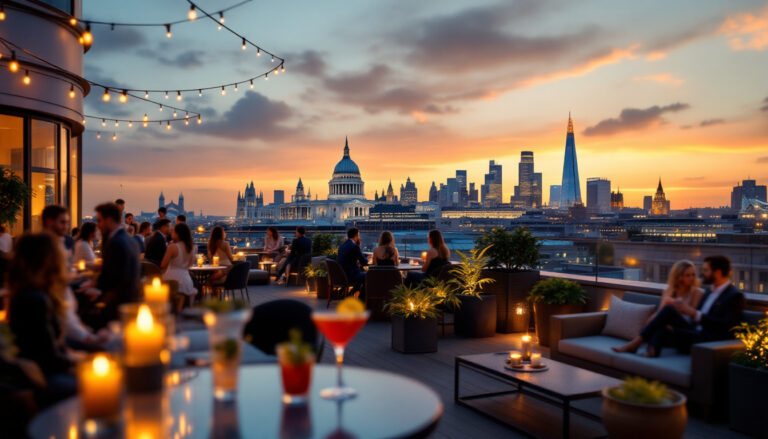Madrid Travel Guide: Things to Know Before Traveling to Madrid, Spain
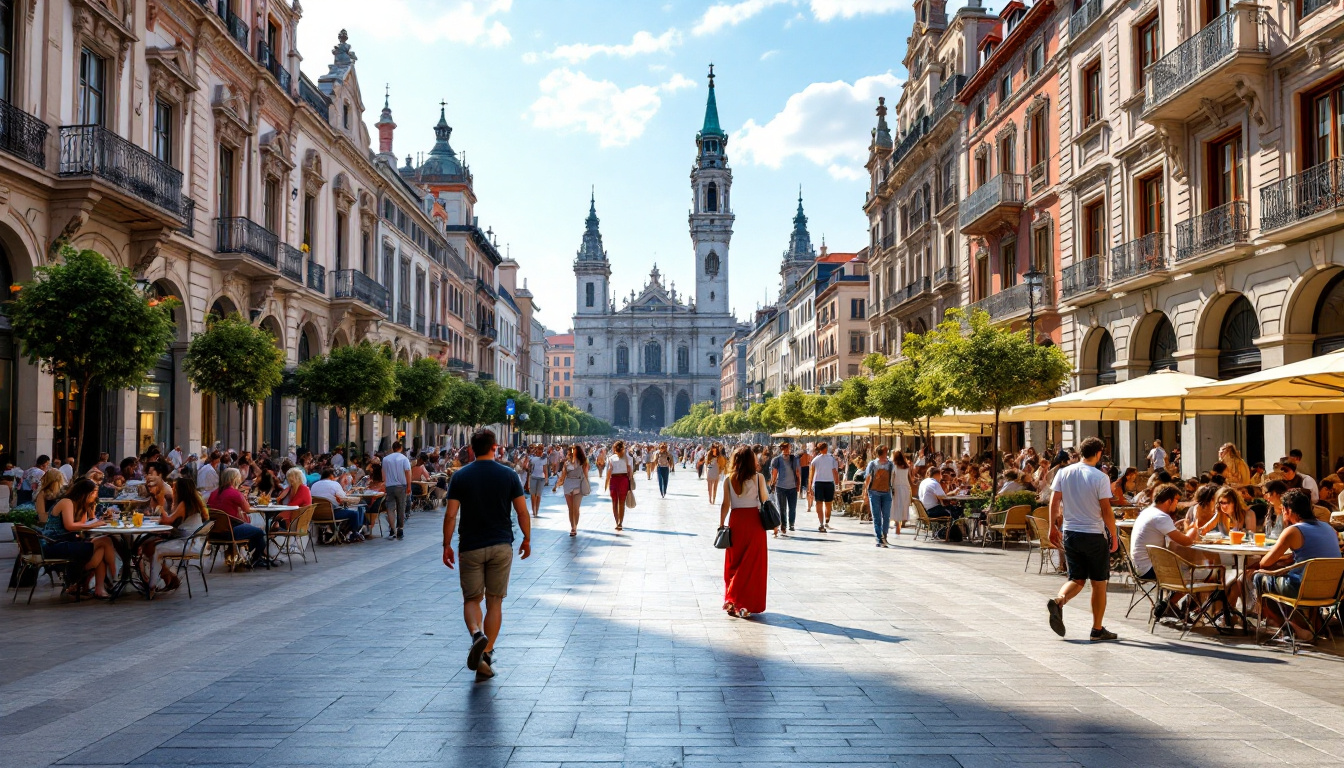
Your Complete Guide to Visiting Madrid, Spain – Madrid beckons with its lively energy and cultural treasures, but savvy travelers should prepare for a few local quirks.
- What are Things to Know Before Going to Madrid?
- Best Time to Plan Your Madrid Trip
- Ideal months to visit Madrid for pleasant weather
- Avoiding peak tourist seasons in Madrid tourism
- Short city breaks versus longer stays
- Balancing sightseeing with relaxation
- Madrid Safety: Essential Tips for Tourists
- Common safety tips for traveling to Madrid
- Areas to avoid as a Madrid tourist
- Recommendations and Madrid travel tips for women
- Safe neighborhoods to stay in Madrid
- Getting Around Madrid: What to Expect
- Exploring central Madrid by foot
- Popular neighborhoods ideal for walking tours
- Using the Metro and Buses When visiting Madrid
- Tips for buying tickets and passes
- Understanding Local Culture and Etiquette in Madrid
- Common phrases to learn before traveling to Madrid
- Do locals speak English in Madrid?
- Guidelines on tipping etiquette in Madrid
- Where and how much to tip during your Madrid vacation
- Budgeting for Your Trip to Madrid Spain
- Typical daily costs for traveling to Madrid
- Money-saving tips for Madrid tourism
- Free attractions and affordable activities in Madrid
- Tips for affordable accommodation and dining
- Must-Know Practical Information About Madrid
- Currency, visa, and documentation requirements
- Madrid airport guide and transportation to the city
- Things you should pack for a Madrid trip
- Essential apps to use in Madrid
- Why Choose Madrid: Insights into the City’s Charm
- Key attractions making Madrid a good place to visit
- Madrid's unique experiences and lively nightlife
- Local lifestyle and culture in Madrid
- Madrid’s culinary highlights for visitors
- Wrapping Up
Spaniards dine fashionably late—don’t expect dinner before 9 PM!
The city’s rhythm includes afternoon siestas, when shops close and locals retreat.
While exploring magnificent plazas and world-class museums, visitors might notice the distinctive Spanish pace of life. What other surprises await in this enchanting capital?
TL;DR
Hide- Madrileños eat late, with lunch typically around 2 PM and dinner after 9 PM.
- Spring (April-May) and fall (September-October) offer the best weather and smaller crowds for visiting.
- Shops often close during siesta hours (2-5 PM), so plan your shopping accordingly.
- The metro system is excellent and affordable, with tourist passes available for multi-day use.
- Madrid is generally safe, but remain vigilant against pickpockets in crowded tourist areas.
What are Things to Know Before Going to Madrid?
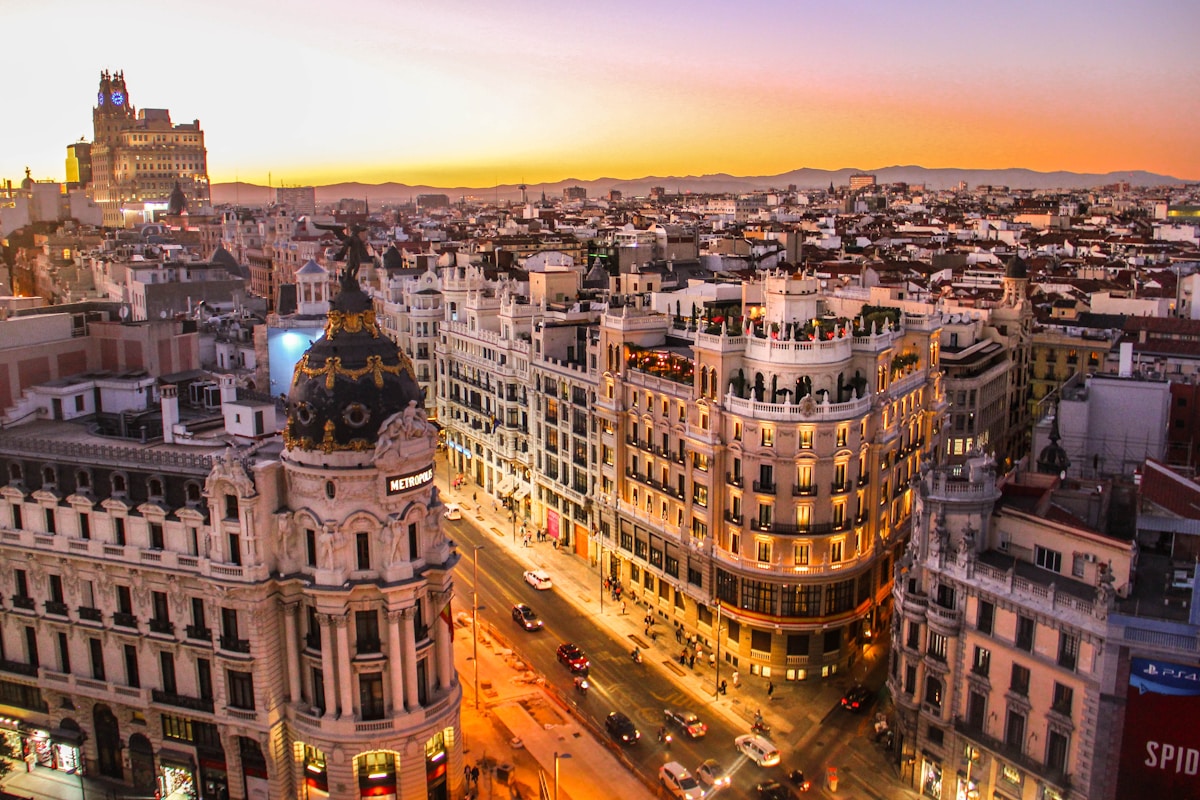
When planning a trip to Madrid, what essential knowledge should travelers arm themselves with before stepping foot in Spain’s lively capital?
Any thorough Madrid guide will emphasize the city’s unique rhythm—locals dine late, with lunch around 2 PM and dinner rarely before 9 PM.
Pack comfortable shoes; Madrid’s beautiful streets deserve exploration on foot! The metro system provides exceptional, affordable transportation throughout the city.
Walking Madrid’s charming streets is a must – pack sturdy footwear and utilize the city’s excellent metro network!
Remember, summer temperatures soar above 95°F, while winters remain relatively mild. Spanish siestas remain part of the culture, with many shops closing mid-afternoon for a few hours of respite.
Essential Madrid travel tips include learning basic Spanish phrases (locals appreciate the effort!) and understanding tipping culture—10% is generous rather than expected.
Keep valuables secure in crowded areas like El Rastro market, and always carry identification, as Spanish law requires it.
Best Time to Plan Your Madrid Trip
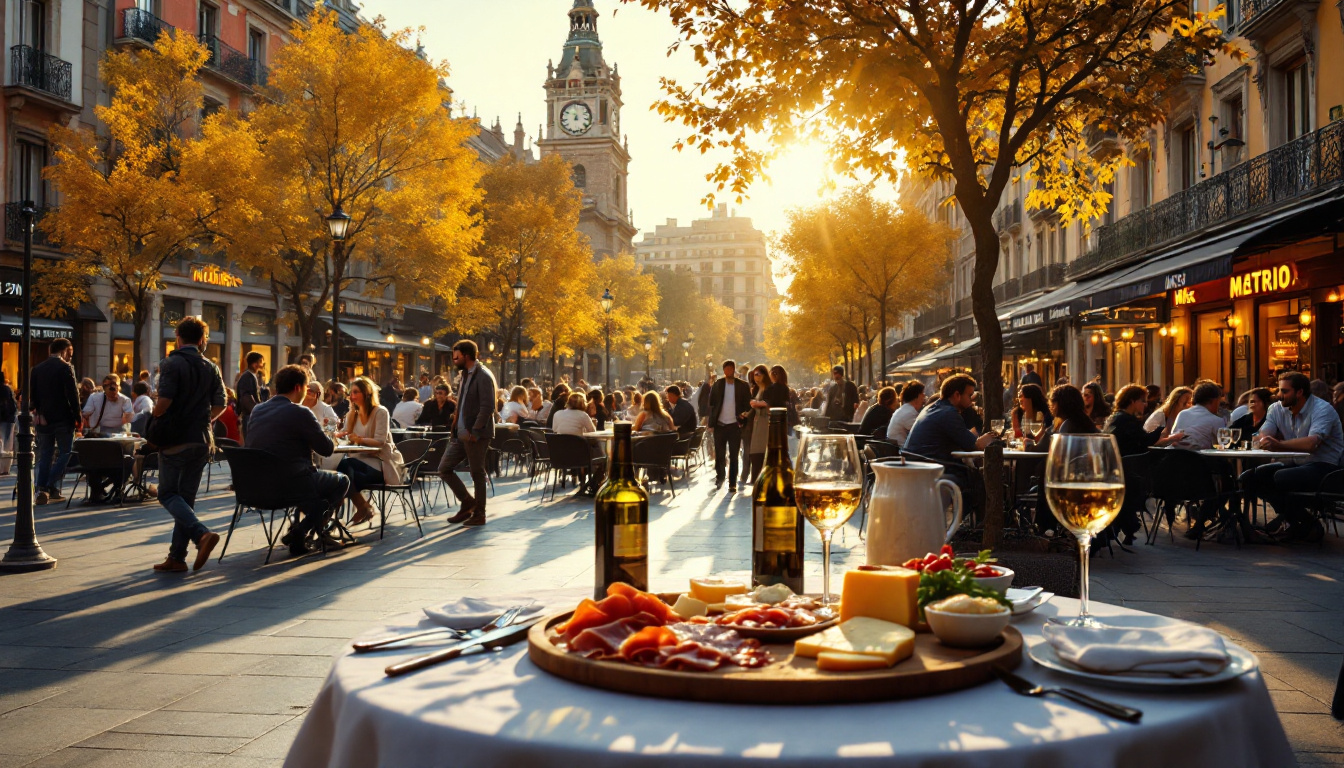
Choosing the ideal timing for a Madrid vacation can transform a good trip into an unforgettable experience, with spring (April-May) and fall (September-October) offering the perfect balance of pleasant weather and manageable crowds.
Summer months bring scorching temperatures that frequently exceed 100°F, while winter delivers cooler conditions that might surprise visitors expecting constant Spanish sunshine.
Most travelers find that 3-5 days provides sufficient time to explore Madrid’s highlights, though culture enthusiasts and day-trip lovers might benefit from extending their stay to a full week to fully embrace the city’s magnificent museums, lively neighborhoods, and nearby historical gems like Toledo and Segovia.
Read our guide on the best time to visit Madrid for better Madrid trip planning.
When is the Best Time to Go to Madrid?
Madrid shines brightest during spring (April-June) and fall (September-October), when golden sunshine bathes the city in comfortable temperatures perfect for exploring its grand boulevards and lively plazas.
Summer months bring scorching heat and an exodus of locals, leaving tourists to navigate crowded attractions in temperatures that routinely exceed 95°F (35°C).
Smart travelers avoid August’s peak tourist crush and instead choose May or October, when the city pulses with authentic energy and you can experience Madrid’s treasures without battling overwhelming crowds or extreme weather.
Ideal months to visit Madrid for pleasant weather

The three most enchanting months to visit Madrid are May, June, and September, when the golden Spanish sun bathes the city in perfect warmth without summer’s scorching intensity.
This sweet spot in Madrid’s calendar offers travelers the freedom to explore bustling plazas without July’s sweltering heat or winter’s chill.
When planning your Madrid Spain travel adventure, these months promise comfortable sightseeing and delightful outdoor dining.
Avoiding peak tourist seasons in Madrid tourism
Beyond finding the perfect weather for your visit, savvy travelers should consider the ebb and flow of tourism when planning their Madrid adventure.
Late July through August sees Madrid tourism at its peak, with crowds flooding popular attractions.
Consider a spring or fall visit instead, when three to four days in Madrid feels spacious rather than rushed through throngs of summer tourists.
How Many Days Do I Need in Madrid?
The duration of a Madrid visit hinges on the balance travelers strike between whirlwind sightseeing and leisurely cultural immersion.
While weekend warriors can conquer the city’s headline attractions in just 2-3 days, those seeking to absorb Madrid’s authentic rhythm might prefer 5-7 days—allowing time to wander neighborhood streets, linger over midday meals, and venture beyond tourist hotspots.
The perfect Madrid itinerary acknowledges that some of the city’s most memorable experiences happen when you’re not rushing from one landmark to the next!
Short city breaks versus longer stays
When deciding how many days to spend in Madrid, travelers face the classic dilemma of fitting the city’s treasures into a tight schedule or allowing time for deeper exploration.
While a whirlwind weekend can capture the city’s highlights, a longer stay of 4-5 days lets visitors wander beyond tourist hotspots, discovering hidden plazas and neighborhood tapas bars that reveal Madrid’s authentic charm.
Balancing sightseeing with relaxation
Many Madrid visitors fall into the exhaustion trap, racing between the Prado Museum, Royal Palace, and Plaza Mayor without pausing to actually experience the city’s rhythms.
What is Madrid like? It’s a city that rewards those who balance their itineraries with leisurely café stops, afternoon siestas, and evening strolls.
Madrid is an eminently walkable city where the most authentic experiences happen when you’re not rushing.
Madrid Safety: Essential Tips for Tourists
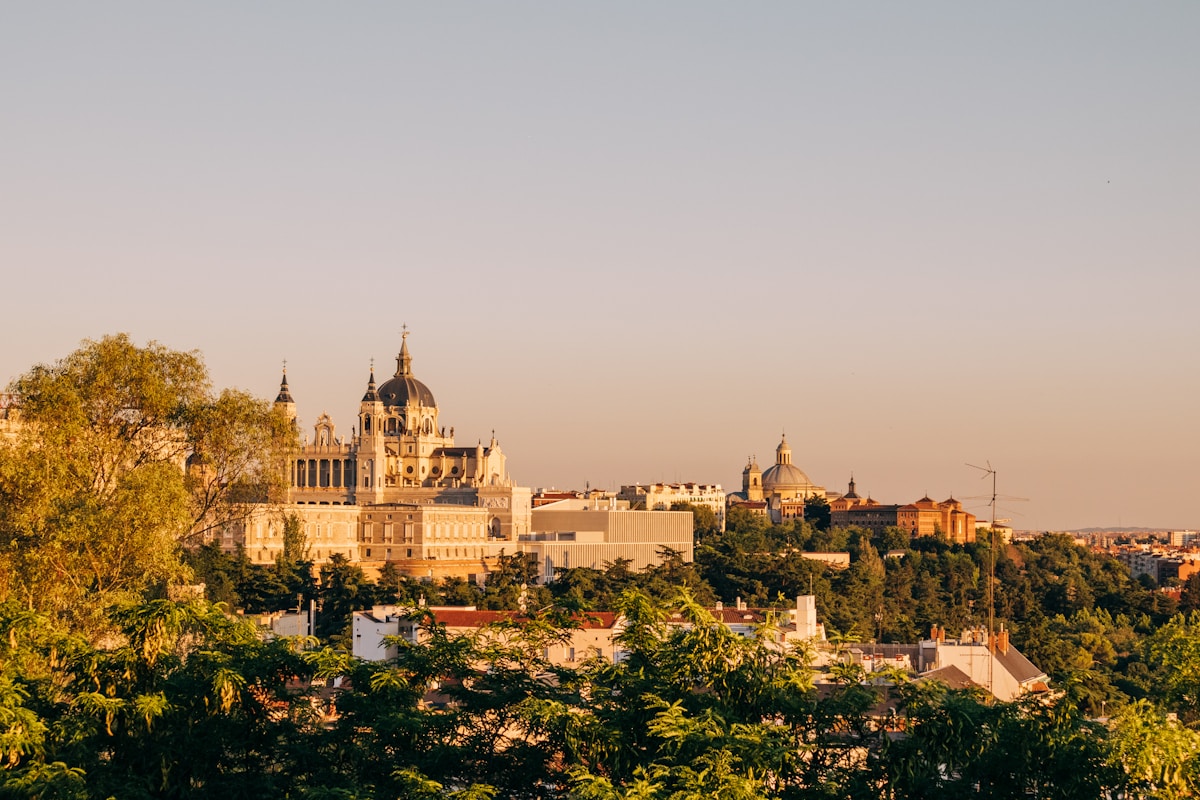
Madrid stands as one of Europe’s safest capital cities, with tourists experiencing minimal issues when taking standard precautions like watching personal belongings in crowded areas.
Solo female travelers can confidently explore the lively streets, bustling plazas, and world-class museums of Madrid at nearly any hour, though late-night metro rides deserve the same vigilance you’d practice in any major city.
The city’s excellent public transportation, well-lit thoroughfares, and the Spaniards’ nocturnal lifestyle create an environment where visitors rarely feel isolated or vulnerable, even when exploring beyond the typical tourist zones!
Is Madrid Safe for Tourists?
Madrid ranks among Europe’s safest capital cities, though tourists should remain vigilant about pickpocketing in crowded areas like Plaza Mayor and the Metro.
Visitors are advised to avoid neighborhoods like Puente de Vallecas and Pan Bendito after dark, areas that locals know are somewhat rougher than the tourist-friendly centro districts.
Keep valuables secure, maintain awareness in busy locations, and trust your instincts—these simple precautions will guarantee your Madrid adventure remains delightfully trouble-free!
Common safety tips for traveling to Madrid
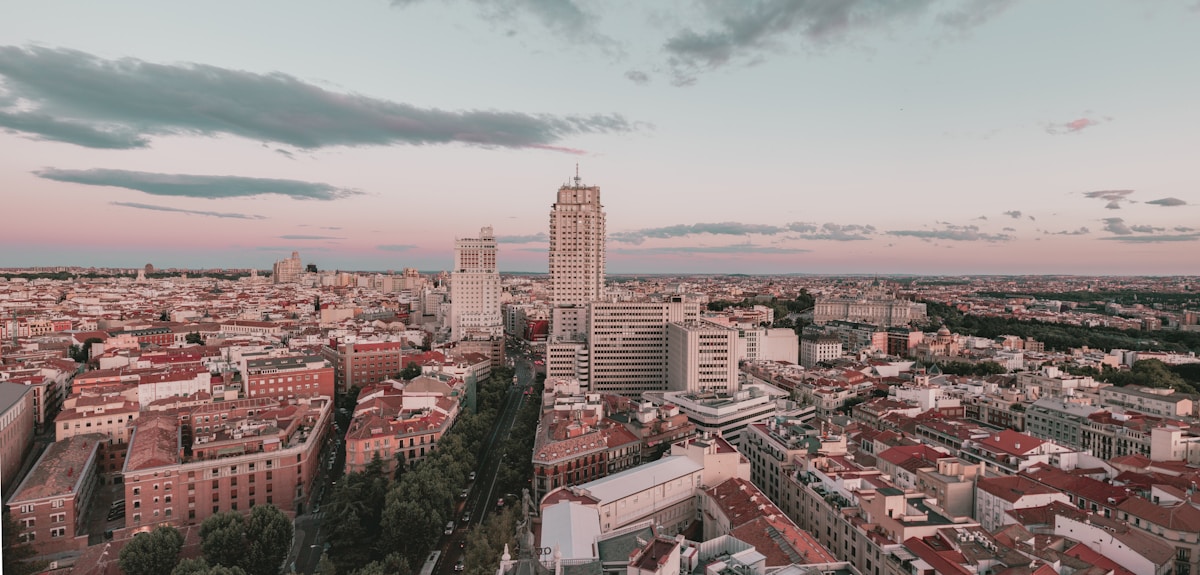
Most travelers find the Spanish capital remarkably safe, though exercising standard precautions remains essential for an enjoyable visit.
While Madrid is safe to travel through both day and night, tourists should watch for pickpockets in crowded areas like Plaza Mayor and Puerta del Sol.
Keep valuables secure, maintain awareness in busy metro stations, and trust your instincts when exploring the lively city!
Areas to avoid as a Madrid tourist
While Madrid ranks among Europe’s safest capitals, tourists should approach a handful of neighborhoods with extra vigilance, particularly after dark.
Areas like Puente de Vallecas, Pan Bendito, and parts of Carabanchel deserve caution.
Is Madrid safe to visit? Absolutely! Just follow these madrid tips: stick to well-lit streets, keep valuables concealed, and trust your instincts when exploring less touristy districts.
Is Madrid Safe for Solo Female Travellers?
Madrid offers an exceptionally safe environment for solo female travelers, with lively public spaces and excellent transportation options that remain active late into the night.
Women exploring the Spanish capital should consider staying in female-friendly neighborhoods like Salamanca, Malasaña, or Chamberí, where abundant cafés, well-lit streets, and community atmosphere create comfortable surroundings.
While maintaining standard travel precautions, female visitors can confidently navigate Madrid’s cultural attractions, bustling markets, and lively plazas without extraordinary safety concerns!
Recommendations and Madrid travel tips for women
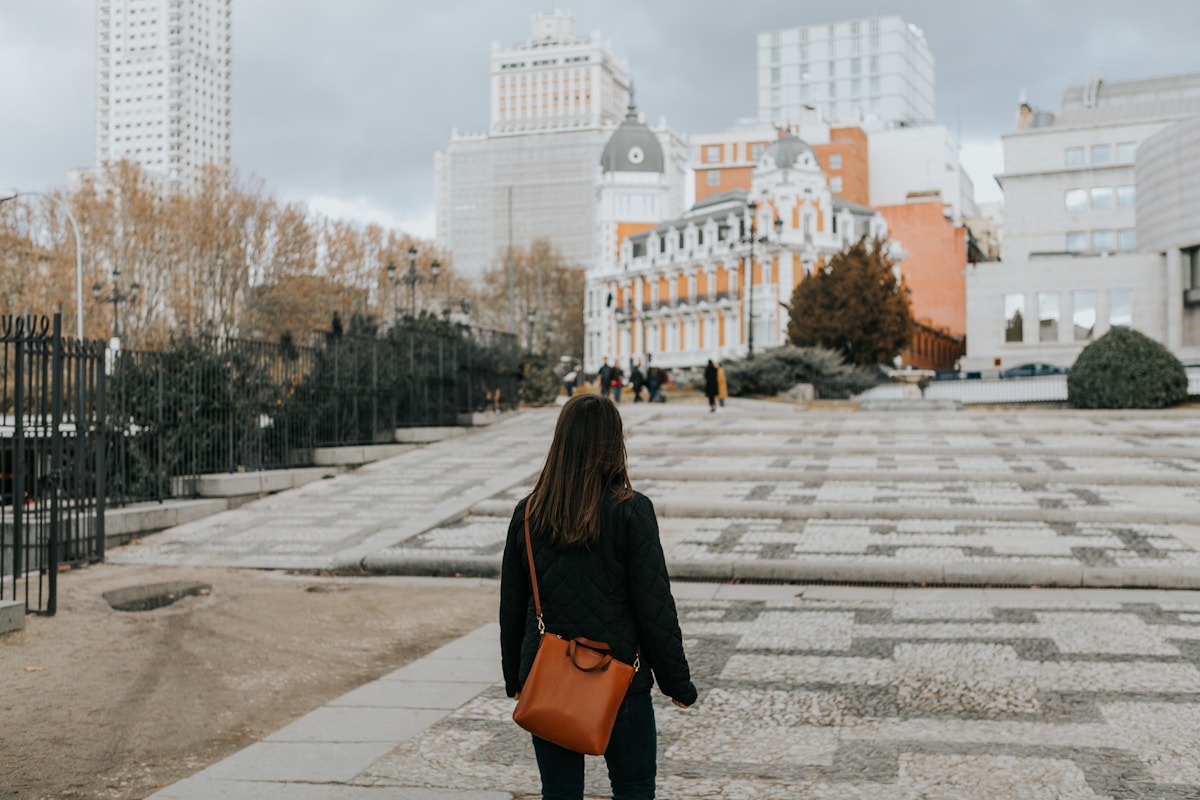
Solo female travelers can feel remarkably secure exploring Spain’s lively capital, as Madrid consistently ranks among Europe’s safest metropolitan destinations.
Women should still exercise standard precautions—avoid dimly lit areas at night, keep valuables concealed, and stay aware of surroundings.
Madrid’s excellent public transportation system runs until late, offering a reliable alternative to walking alone after dark.
Safe neighborhoods to stay in Madrid

Choosing the best neighborhoods in Madrid forms the foundation of a safe, enjoyable Madrid experience.
For madrid tourists concerned about safety, Salamanca offers upscale shopping and dining in a secure environment.
Chamberí and Retiro provide peaceful, residential vibes while remaining close to attractions.
Centro and Malasaña bustle with energy – is madrid spain safe at night? Absolutely in these areas, where lively streets stay well-lit and populated until dawn!
Getting Around Madrid: What to Expect

Guiding through Madrid offers visitors countless options, from leisurely strolls through charming neighborhoods to efficient public transit connections that snake throughout the sprawling metropolis.
The city’s compact historic center, with its pedestrian-friendly plazas and wide boulevards, makes walking an absolute joy for tourists enthusiastic to soak up the authentic madrileño atmosphere.
Madrid’s extensive network of metros, buses, and affordable taxis guarantees that even the furthest attractions remain within easy reach for travelers who prefer to save their steps for museum galleries and tapas bars!
Is Madrid a Walkable City?
Madrid stands as one of Europe’s most pedestrian-friendly capitals, with its historic center designed for exploration on foot.
Neighborhoods like Sol, La Latina, and Malasaña offer compact, lively streetscapes where visitors can stroll between major attractions, charming plazas, and hidden gems without needing public transport.
The city’s well-maintained sidewalks, pedestrianized zones, and logical grid layout make walking tours through these popular districts not just possible but the preferred way to absorb Madrid’s authentic character!
Exploring central Madrid by foot
The heartbeat of Spain’s capital is best experienced on foot, allowing visitors to absorb the city’s lively energy at a leisurely pace.
When planning a Madrid vacation, prioritize exploring the compact city center, where grand plazas, hidden tapas bars, and architectural marvels await around every corner.
This guide to Madrid wouldn’t be complete without emphasizing how walkable treasures like Sol, Plaza Mayor, and Gran Vía connect seamlessly!
Popular neighborhoods ideal for walking tours
Beyond the iconic central districts lie several distinctive Madrid neighborhoods that reward curious pedestrians with authentic experiences away from the main tourist paths.
Visitors planning to visit Madrid should explore Malasaña’s trendy boutiques and street art, or experience Lavapiés’ multicultural energy and tapas scene.
Your Madrid visit isn’t complete without wandering through bohemian Chueca or elegant Salamanca, where locals shop and socialize freely.
Exploring Malasaña and Chueca are two of the best things to do in Madrid, so these neighborhoods are great to explore.
Guide to Madrid Public Transport
Madrid’s excellent public transportation system makes exploring this sprawling metropolis a breeze for visitors.
The Metro, with its 12 color-coded lines, connects most major attractions, while the extensive bus network fills any gaps in coverage.
Savvy travelers should consider purchasing a multi-day Tourist Travel Pass or the contactless Multi Card, both offering unlimited rides and significant savings compared to buying individual tickets.
Using the Metro and Buses When visiting Madrid
When visiting the Spanish capital, traversing its extensive public transportation system proves remarkably straightforward and efficient.
Madrid’s metro network connects virtually all tourist hotspots, making your Madrid trip hassle-free!
Buses complement the underground system perfectly, reaching areas the metro doesn’t.
For travelers seeking freedom while exploring, grab a multi-day tourist card—it’ll save money and eliminate the need for individual tickets.
Tips for buying tickets and passes
Purchasing tickets for Madrid’s public transportation system offers several convenient options that cater to different travel needs and budgets.
When visiting Madrid, consider these money-saving options:
- Buy a reloadable Multi Card (€2.50) at any station.
- Purchase the Madrid Tourist Travel Pass for unlimited travel.
- Consider 10-trip tickets for travel to Madrid Spain day trips.
- Use contactless payment on buses for single journeys.
Understanding Local Culture and Etiquette in Madrid
Understanding Madrid’s cultural landscape requires getting familiar with some basics, including language and social norms.
Spanish is Madrid’s official language, though many locals in tourist areas speak English—but attempting a few Spanish phrases will always win you points with Madrileños!
When it comes to tipping, Madrid follows a more relaxed approach than North American standards; 5-10% is considered generous at restaurants, while rounding up the bill for taxis or leaving small change for café service is perfectly acceptable.
What Language is Spoken in Madrid Spain?
Spanish reigns as Madrid’s official language, but travelers can navigate the city with a handful of essential phrases like “hola” (hello), “gracias” (thank you), and “¿dónde está…?” (where is…?).
While English proficiency varies throughout Madrid, most hotel staff, restaurant workers in tourist areas, and younger Madrileños can communicate effectively in English.
Nevertheless, locals deeply appreciate tourists who make even modest attempts to speak Spanish, often responding with warmer service and genuine smiles that transform an ordinary visit into an authentic cultural experience.
Common phrases to learn before traveling to Madrid
Why attempt to navigate Madrid without knowing a few key phrases in the local language? Spanish is what’s spoken in Madrid, Spain, but locals appreciate when visitors make an effort to communicate.
Travel to Madrid becomes infinitely more rewarding when you connect authentically!
- “Hola” and “Gracias” – Hello and Thank you
- “¿Dónde está…?” – Where is…?
- “La cuenta, por favor” – The bill, please
- “No hablo español” – I don’t speak Spanish
Do locals speak English in Madrid?
How prepared are travelers for Madrid’s linguistic landscape? While exploring Madrid, Spain travel destinations, visitors find that English proficiency varies widely.
In tourist hotspots and upscale establishments, English communication flows easily! However, venture into local neighborhoods, and Spanish becomes essential.
Many Madrileños appreciate tourists who attempt basic phrases—this small effort opens doors to authentic travel Madrid experiences that monolingual visitors might miss.
Tipping in Madrid: What’s the Norm?
Maneuvering the tipping customs in Madrid can be surprisingly straightforward for visitors, as Spaniards generally maintain a more relaxed approach to gratuities than Americans might be accustomed to.
In restaurants, leaving 5-10% for good service is appreciated but never mandatory, while simply rounding up the bill to the nearest euro works perfectly for taxi drivers and café servers.
Understanding these local tipping expectations will help you avoid both awkward overpayment situations and potential faux pas during your Madrid adventures!
Guidelines on tipping etiquette in Madrid
When dining in Madrid, understanding the local tipping culture can save visitors from awkward situations and help them blend in seamlessly with the natives.
Things to know before traveling to Spain, especially regarding tipping in Madrid:
- Service charges are often included in the bill.
- 5-10% is adequate for exceptional service.
- Taxi drivers typically expect rounded-up fares.
- Bar service rarely requires tips.
Where and how much to tip during your Madrid vacation

Tipping in Madrid follows distinct patterns that vary by establishment and service type, expanding beyond the general guidelines mentioned earlier.
For your Madrid vacation, leave €1-2 for café servers, 5-10% at restaurants for exceptional service, and round up taxi fares.
Things to know before going to Spain: hotel staff appreciate €1-2 per bag or daily for housekeeping—small gestures that enhance your travel experience!
Budgeting for Your Trip to Madrid Spain
Madrid offers remarkable value for budget-conscious travelers, with free museum hours and affordable tapas making cultural immersion possible without breaking the bank.
Savvy visitors can stretch their euros by taking advantage of the city’s excellent public transportation system and wallet-friendly lunch menus (menú del día) offered at numerous restaurants.
While luxury experiences abound in Spain’s capital, the authentic charm of Madrid—from its bustling plazas to its lively neighborhood markets—can be thoroughly enjoyed on a modest budget!
Madrid Travel: Budgeting Essentials
Budgeting for Madrid requires understanding that average daily expenses typically range from €70-150 per person, covering accommodations, food, transportation, and attractions.
Savvy travelers can stretch their euros further by taking advantage of Madrid’s excellent public transportation system, the affordable Menú del Día lunch specials offered throughout the city, and free museum hours!
For those watching their wallets, Madrid generously offers countless free experiences—from wandering the enchanting El Retiro Park to admiring street performances in Plaza Mayor—proving that experiencing the Spanish capital’s charm doesn’t always require opening your wallet.
Typical daily costs for traveling to Madrid
Understanding the typical daily costs for a trip to the Spanish capital empowers travelers to plan effectively and avoid financial surprises.
Madrid, while not Europe’s cheapest destination, offers excellent value compared to other Western European capitals.
- Accommodations: €50-200/night, depending on luxury level
- Meals: €5-15 for breakfast/lunch, €15-30 for dinner
- Transportation: €1.50-2.00 per metro ride, €21.50 for 10-trip ticket
- Attractions: Most museums €5-15, with free evening hours
Money-saving tips for Madrid tourism
How can travelers enjoy Madrid’s countless delights without depleting their vacation funds?
Madrid’s free museum hours, budget tapas crawls, and wallet-friendly transit passes make it abundantly clear why visit Madrid on a budget.
The city offers complimentary walking tours showcasing why the Spanish capital is madrid worth visiting—gorgeous parks, stunning architecture, and authentic cultural experiences that don’t cost a euro!
Is Madrid Worth Visiting on a Budget?
Madrid offers extraordinary value for budget travelers with its wealth of free attractions, including the magnificent El Retiro Park and the enchanting Prado Museum during its free entry hours.
Visitors can stretch their euros by opting for family-run hostels or budget-friendly Airbnbs in lively neighborhoods like Lavapiés, where affordable accommodation doesn’t sacrifice authentic charm.
The culinary landscape welcomes thrifty travelers too, with economical menú del día lunch specials and bustling mercados where sampling local delicacies won’t empty your wallet!
Free attractions and affordable activities in Madrid
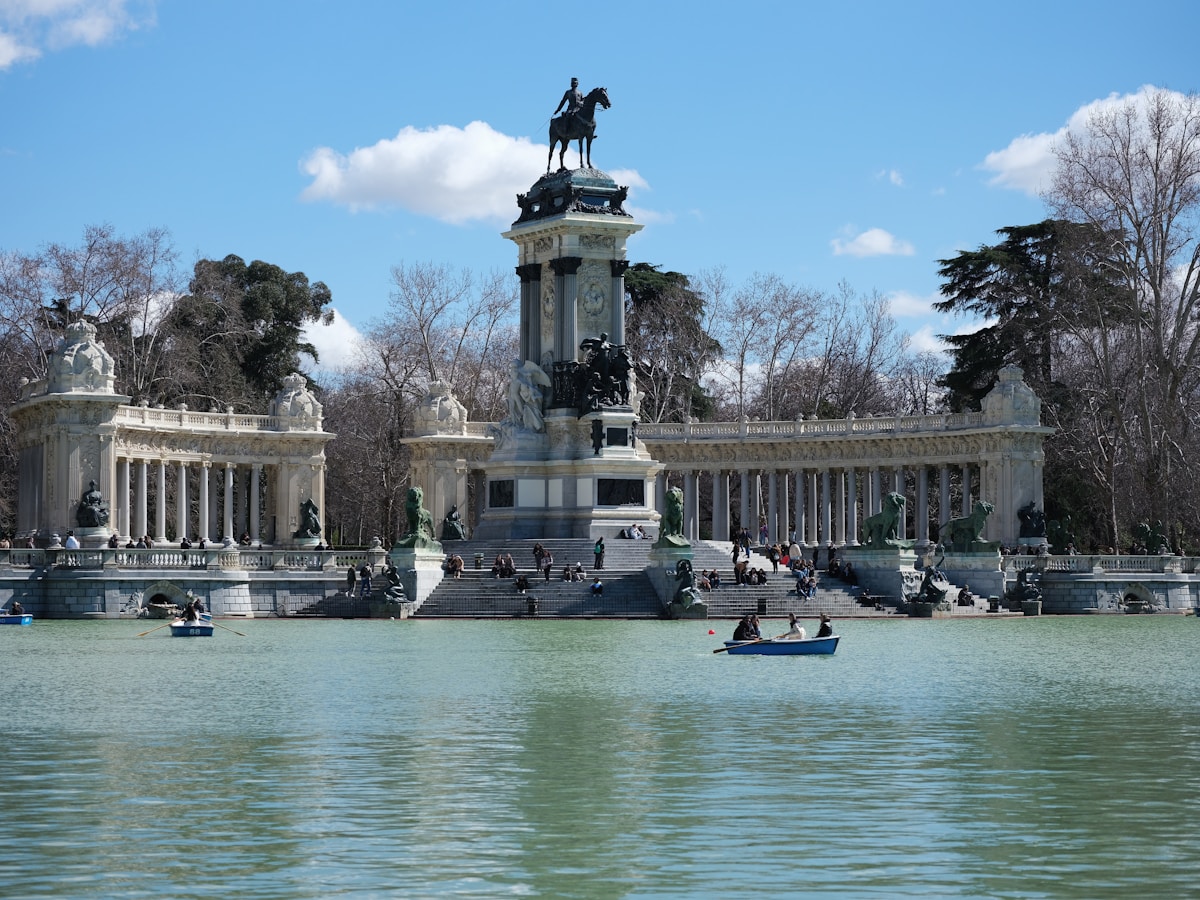
While visitors often worry about vacation costs, exploring Madrid on a budget is remarkably achievable thanks to its wealth of free attractions and affordable activities.
- El Retiro Park offers lush gardens and rowboat rentals for under €6.
- Free museum hours at world-class institutions like the Prado (6-8pm weekdays).
- Mercado de San Miguel for affordable tapas sampling.
- Sunday El Rastro flea market for local culture and bargains.
Tips for affordable accommodation and dining
When it comes to stretching your euro in Spain’s capital, affordable accommodation and dining options abound for savvy travelers.
Unlike Toledo, what was the capital of Spain before Madrid, budget-conscious visitors can find excellent hostels near Gran Vía and Malasaña.
Understanding why Madrid is important as a cultural hub helps travelers discover authentic tapas bars where locals feast on €2 plates—skip touristy spots for true culinary freedom!
Must-Know Practical Information About Madrid
Successful travelers to Madrid quickly discover that a handful of practical tips can transform their experience from merely enjoyable to truly magnificent.
First-time visitors should remember that Madrileños typically dine late (lunch around 2pm, dinner after 9pm). Most shops close during siesta (roughly 2-5pm), and the Metro system offers an efficient, affordable way to navigate the sprawling city.
Newcomers will also appreciate knowing that while credit cards are widely accepted, carrying some cash for smaller establishments is wise.
Additionally, Madrid’s continental climate creates scorching summers and occasionally chilly winters, making spring and fall the most pleasant times to explore the Spanish capital.
Things to Know Before Traveling to Spain (Madrid-specific)
Before starting your Madrid adventure, it’s crucial to understand the practical details that make travel smoother, from the Euro currency to specific visa requirements for your nationality.
Barajas International Airport, Madrid’s gateway to the world, offers four terminals connected by a free shuttle service, with multiple transportation options into the city center.
Savvy travelers should prepare by downloading the Madrid Metro app and keeping their passport handy, as Spain requires visitors to carry identification at all times!
Currency, visa, and documentation requirements
Preparation for your Madrid adventure requires understanding the essential documentation and currency considerations before departure.
Arm yourself with knowledge to navigate bureaucratic hurdles and financial transactions with ease!
- Spain uses the Euro (€), widely accepted at most establishments with ATMs readily available.
- EU citizens need only ID cards while non-EU visitors require passports valid for 3+ months.
- Americans enjoy visa-free stays up to 90 days.
- Keep digital copies of all travel documents accessible offline.
Madrid airport guide and transportation to the city
After securing your euros and documents, landing smoothly at Madrid’s airport marks the true beginning of your Spanish adventure!
Madrid-Barajas Airport offers several transportation options: the efficient Metro Line 8, Airport Express buses running 24/7, or convenient taxis with fixed rates to the city center.
Most travelers find the Metro quickest, whisking you to Sol in just 30 minutes for under €5.
Madrid Travel Tips for First-Time Visitors
First-time visitors to Madrid should come prepared with both the right items and digital tools for a seamless experience.
Savvy travelers pack comfortable walking shoes, a refillable water bottle for Madrid’s hot summers, and a shawl or light sweater for accessing religious sites or evening temperature drops.
Essential apps to download before arrival include Madrid EMT (for public transportation), El Tiempo (weather forecasts), and Cabify or FreeNow for reliable taxi services when your feet need a break!
Things you should pack for a Madrid trip
Packing strategically for Madrid guarantees visitors can fully embrace the city’s lively energy without luggage-related headaches.
Must-pack items include:
- Comfortable walking shoes for traversing Madrid’s cobblestone streets
- Portable water bottle to stay hydrated during scorching summer days
- Lightweight, breathable clothing with one dressy outfit for nightlife
- Power adapter compatible with European outlets
Essential apps to use in Madrid
Why struggle with direction finding or language barriers when Madrid’s lively cityscape can be effortlessly explored with the right digital tools?
Savvy travelers should download Moovit or Citymapper for maneuvering public transit, while Google Translate helps with menu deciphering.
BiciMAD tracks city bike availability, and El Tiempo keeps you weather-ready.
Don’t forget Cabify for reliable rides after those late-night tapas adventures!
Why Choose Madrid: Insights into the City’s Charm
Madrid captivates visitors with its seamless blend of historic grandeur and modern energy, offering an authentic Spanish experience that’s both accessible and extraordinary.
Travelers find themselves enchanted by the city’s welcoming atmosphere, where world-class museums stand alongside buzzing plazas and tapas bars hum with conversation until the early hours.
Beyond its architectural splendor and cultural riches, Madrid’s charm lies in its rhythm—a place where locals savor life’s pleasures unapologetically, inviting visitors to join in the celebration rather than merely observe it.
Why Visit Madrid?
Madrid beckons travelers with an irresistible blend of world-class museums, architectural marvels, and lively public squares that capture the essence of Spanish culture.
The city’s unique charm emerges through its contradictions—where centuries-old traditions harmonize with contemporary urban energy, and where afternoon siestas give way to legendary nightlife that doesn’t begin until after midnight.
From savoring tapas in bustling markets to witnessing flamenco performances that stir the soul, Madrid offers experiences that engage all senses and leave visitors enchanted with Spain’s enthralling capital.
Key attractions making Madrid a good place to visit
The heartbeat of Spain’s cultural landscape pulsates through the historic streets of the capital, enticing visitors with an irresistible blend of art, architecture, and authentic experiences.
- Prado Museum – Housing masterpieces by Goya, Velázquez, and El Greco
- Retiro Park – A verdant oasis perfect for leisurely afternoon strolls
- Plaza Mayor – The grand square where Madrid’s soul truly comes alive
- Royal Palace – Breathtaking opulence fit for kings
Madrid’s unique experiences and lively nightlife
When does a city truly come alive? Madrid reveals its soul after dark, when plazas fill with laughter and streets pulse with energy.
From midnight tapas crawls to flamenco shows that ignite the senses, Madrid’s nightlife defies conventional bedtimes. Locals don’t start dinner until 10pm, and clubs don’t hit their stride until 2am—proof that this city embraces freedom in its most exhilarating form.
What is Madrid Like for Travelers?
Madrid envelops travelers in its lively local culture, where late-night dinners, afternoon siestas, and passionate conversations in bustling plazas form the backbone of authentic Madrileño life.
The city’s culinary landscape offers a feast for the senses, from the historic food markets like Mercado San Miguel to neighborhood tapas bars where locals gather over shared plates and flowing wine.
Visitors quickly discover that food isn’t merely sustenance in Madrid but rather a celebratory social ritual, evidenced by the crowds that spill onto terraces well past midnight, savoring traditional dishes like cocido madrileño and crispy churros dipped in thick chocolate.
Local lifestyle and culture in Madrid
Deeply ingrained within the heart of Spanish civilization, Madrid’s lifestyle offers visitors a fascinating glimpse into authentic Iberian culture.
The city pulses with a rhythm uniquely its own, inviting travelers to dive headfirst into its lively customs.
- Late dinners starting after 9pm transform evenings into social celebrations
- Afternoon siestas reshape the daily schedule, with shops closing mid-day
- Passionate debates flourish in local cafés over politics, football, and art
- Spontaneous street performances and impromptu gatherings define neighborhood life
Madrid’s culinary highlights for visitors
While exploring the lively streets of Spain’s capital, visitors discover a culinary landscape that rivals any in Europe for both tradition and innovation.
Madrid’s food scene dazzles with tapas bars where locals gather for crispy croquetas and jamón ibérico, while trendy markets like Mercado de San Miguel offer a playground of flavors.
Don’t miss churros con chocolate—Madrid’s beloved sweet tradition!
Wrapping Up
Madrid beckons travelers with open arms, offering a sensory fiesta where ancient traditions dance alongside modern vibrations.
Like a perfectly orchestrated flamenco performance, this capital city rewards those who embrace its rhythm—late dinners, afternoon siestas, and passionate conversations.
With practical knowledge about transportation, safety, and local customs tucked into your pocket, Madrid transforms from a mere destination into an unforgettable experience that lingers long after departure.






